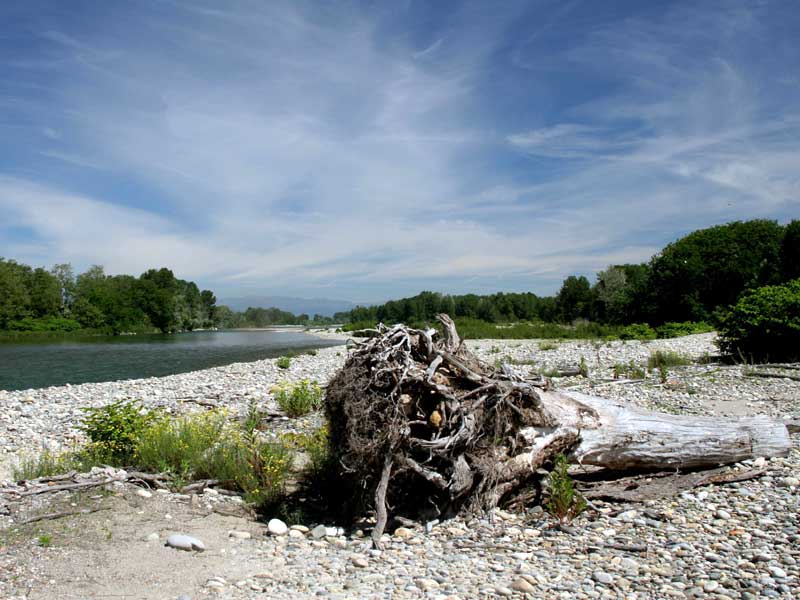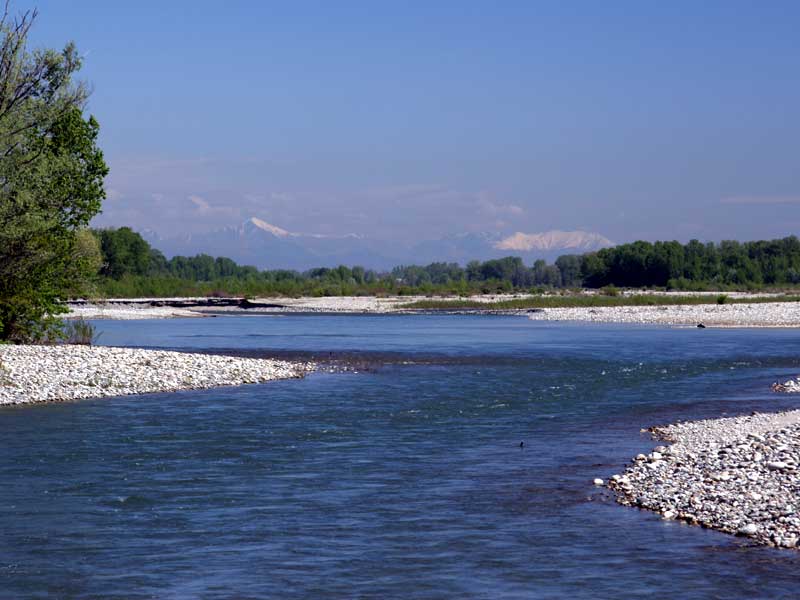Points of Interest
The Park Towns
San Nazzaro Sesia
In the town, tourists can visit the Benedictine abbey of San Nazario
and San Celso. This complex represents the main architectural symbol of
the protected area. It was founded in 1040 by the bishop of Novara,
Riprando, with the help of the Earls of Biandrate. The holy buildings
are surrounded by a defensive curtain. They were built in different
periods. The bell tower and the two sides of the narthex date back to
the Romanesque period, while the church was built in 15th century. The
present cloister was changed in 14th and 15th centuries.
Not far from the town in the direction to Villata, there is Santuario della Madonna della Fontana,
an oasis of green among the fields. It was built at the end of the 16th
century over a spring. The water gushes out of a hole in the wall near
the altar.
Further info (Italian text)
Villata
The town has developed around the castle which was built in 14th century. Società Operaia di Mutuo Soccorso and Banda Musicale S. Cecilia (band) are two very important associations for historical and cultural reasons. Their headquarters are situated in the town.
Further info (Italian text)
Casalbeltrame
Here visitors can see many finds of the Ricetto fortifications, the Medieval bell tower, and the little square in front of the parish church. In Fisrengo, inside the church, it is possible to see a fresco of Madonna delle Grazie (16th century).
Further info (Italian text)
Greggio
There are some finds of Ricetto, which was made up from some houses surrounded by boundary walls. Here the inhabitants of the area used to take shelter in case of danger. It was built up during the Middle Ages with stones arranged in the shape of a herringbone. Channel Cavour crosses the town area. It passes under the river Sesia thanks to a siphon which was built more than one century ago. However, it is still a great example in the field of waterworks.
Further info (Italian text)
Oldenico
We can find some traces of Medieval buildings in the houses, reminding visitors of an old castle. The Romanesque church is also very interesting.
Further info (Italian text)
Carisio
The ruins of the castle date back to 14th and 15th centuries. In 1399 the fortress became the headquarters of leader Facino Cane. The country ward of S. Damiano houses many ruins of fortifications dating back to the 15th century. Cascina Nebbione (Nebbione farmstead) houses an old ice-house and the reworked ruins of a fortified complex.
Further info (Italian text)
Albano Vercellese
The present castle, dating back to 15th century, was built on former fortifications. The three big pointed windows and the beautiful entrance door are worth a mention. Out of the town, in the direction to Vercelli, it is possible to visit the old little church of SS. Trinità, which houses some valuable 14th century frescoes.
Further info (Italian text)
Villarboit
The castle (13th and 14th centuries) stands near the stream Rovasenda.
The town of Monformoso lies not far from the town (direction Balocco).
Further info (Italian text)







